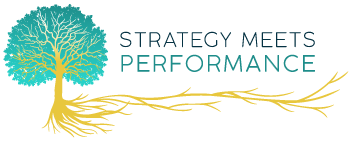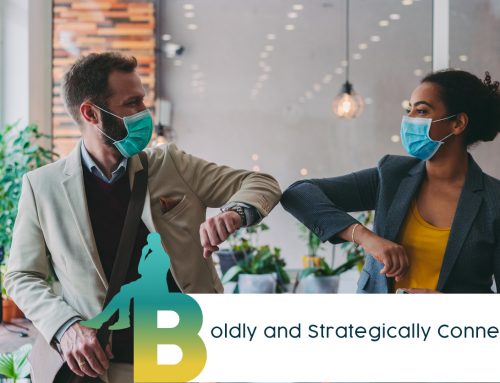“The only thing of real importance that leaders do is to create and manage culture. If you do not manage culture, it manages you, and you may not even be aware of the extent to which this is happening,” Edgar Schein, professor MIT Sloan School of Management
Have you ever walked into an office that buzzed with energy – where you see employees talking in clusters, all in some form of collaboration such as brainstorming and writing ideas to focused conversations to casual chatting? What you may not know is that there is a method and design behind these open types of collaboration. Just as leaders take time to create and communicate the corporate strategy, paying attention to where and how employees execute this strategy is a key to boosting productivity, innovation and morale.
In an effort to share some best practices that will help you create more collaboration in your workplace, I combined my background of organizational development with the expertise of top architects and designers I interviewed from southern California firms. The results are the Four C’s (collaboration, community, creativity, and corporate values); ways to describe the method and design behind the energy and collaboration we all seek.
I’ve learned from my experience helping clients transition that in the rush to make change, leaders don’t always think of the impact it will have on employees. This white paper first shares the best practices for preparing for and implementing a space change. In Part I, you’ll read fresh information from top architects and designers on how they created successful outcomes and improved cultures for their clients.
Using the Four C’s to Plan Workspace Change
Collaboration: Get your people involved
A critical part of changing your space is getting employee input, involvement and participation. Architect John Turpit, Director of Corporate and Developer Services at RJ Architects shared a story that could have had disastrous results.
“No matter how much a company’s senior management thinks they know about their company and what would be best, it is critically important to review the new space concept with everyone in the company before starting to develop construction documents.”
He shared the story of a client firm that specialized in research and development and needed to move from three 70,000 square foot buildings to one 300,000 square foot open space. Turpit’s firm was advised by senior management to place the private offices on the perimeter of the building adjacent to the windows, leaving the large electronics lab in the center. Assuming that management had reviewed these plans with other employees, Turpit and his team presented the concept drawings, which were then presented to the staff.
Turpit said the response by the engineers demonstrated how little senior management knew about how the company really worked. For a great part of an eight-hour day, the engineers did focused, tedious work in the labs. The ability to look outside, adjust eye focus and gain a sense of time gave the staff a needed mental break.
“It was those young, lab-bound engineers who were going to determine the ultimate success of the company. Their buy-in and satisfaction with their workspace was critical,” Turpit said.
Needless to say, the staff engineers were upset and threatened to quit unless the large electronics labs were relocated to the perimeter walls allowing for daylight and views. The leaders did change the plans, and subsequently the engineers and all employees have been pleased and productive with this change.
Community: Identify and prepare your community
While it is important to engage employees, a successful design process must also balance the individual employee needs with larger corporate goals. In my study of the CEOs of San Diego’s fastest growing companies, a main theme that emerged was that customers are being invited to join the community. Designing an open, welcoming space can be a way to make this happen.
Another advantage of an open space is that it can encourage people to speak casually, exchange ideas and “run” into each other. The Pixar building was designed to promote unplanned encounters and collaborations. “If the building doesn’t encourage that, you’ll lose a lot of innovation and the magic that’s sparked by serendipity,” Steve Jobs said about the space.
Architect Daniel A. Stewart, a senior associate at RJ Architects shared how his firm introduced the idea for an open space in a project for the County of San Diego Operations Center where the focus was on two LEED requirements: providing natural light to 75% of the interior spaces and offering exteriors views from 90% of work spaces.
Mock-ups and test drives. As a result, the design team proposed an open floor plan with executive offices and support spaces located in the building core. This “democratic approach” optimized light and views for the majority of employees. The facility manager anticipated that junior and senior managers, many of whom were coming from windowless private offices, would react negatively to being moved into an open environment. Stewart collaborated with the General Services department to create a mock-up of the proposed furniture systems on site, and to invite employees to “test drive” them. This allowed employees to better visualize their new environment, reducing anxiety.
“Once they could see what they were getting, most employees became excited at how nice their new furniture was. This also provided an opportunity for employees to influence and buy into the project. I highly recommend this approach when preparing your community for the change.”
“At the end, employee satisfaction is very high. They are arriving earlier, staying later, and are more polite to their customers.” According to General Services, one of the most common comments is “Look at the big windows and natural light, I can’t believe how nice it is.”
Alexis Dennis, a designer with Gensler, a global design firm shared her experiences with Belkin, a client firm who has had great success in improving the culture and collaboration through their workspace change. The client had two locations and wanted a headquarters that would bring two communities together – the creative studio and the laboratory – so the two formerly separate groups could interact as one community. The new 137,000 square foot headquarters had team rooms for intensive group collaboration and open cylindrical areas for refreshments and more casual groupings.
Eliminating physical manifestations of hierarchy. To increase equality and encourage teamwork, all offices were designed the same size and located in the core of the building so natural light was accessible to all the areas throughout the space.
Creativity: Make space for individual and group creativity and chance encounters
As you can see in these two examples, the standards for office design are changing from the common ring of executive offices around the perimeter with cubes in the middle to open spaces, low panels and all-day cafes[1]. These changes have been found to support collaboration – from mentoring and problem-solving to information sharing. When creating the space, you should ask how it would help your employees be more creative. For employees who need to collaborate on projects, does your new space give options to host quick meetings and brainstorm sessions without having to book a large conference room?
A study by Knoll Design, a global workplace furnishings firm found that when given the choice, the types of rooms employees use the most are those that fit 2-3 employees at a time. Thus the medium size room – the 8-12 range that once was common – is less favored as it is often too large for typical spontaneous meetings.
Gensler found in their recent research that respondents rated “individual focus” as the most significant factor in workplace effectiveness. They found that if this factor is supported, collaboration, learning and social interaction increase, and if ignored, all decrease. Furthermore, providing more quiet areas is particularly helpful for the one-third of the population who are introverts, according to Susan McCain, author of Quiet: The Power of Introverts in a World That Can’t Stop Talking.
Dennis recommends a variety of “we type space” or spaces that are for every one. This means you can make the workstations smaller but then don’t provide teaming tables right next to them. You can instead provide a larger quantity of small team room or tables in open areas so people can get up and get away from their desk for a quick conversation without disrupting the people around them.
She shared that another way to promote quiet time is to offer flexible work schedules. She shared that some people like to come to the office early when it is quiet and some people like to do their focused work from home.
Corporate values: Designing to live your values and brand
According to Knoll research, when company leaders decide it’s time to move the company’s workspace, the two most common reasons are cost savings and the need to increase space. Another driver for change, and a great opportunity to strengthen the culture, is using the new space to communicate the corporate values and brand.
Your company’s values, when role-modeled and reinforced, are the core of what your organization is about. Core values can be viewed as guiding principles for how everyone behaves, makes decisions and prioritizes. Once defined, values can positively impact every aspect of your organization. Once the vision, mission and values have been created based on the organization’s current and future strategy, it is critical to support, nurture and “live” these values. Not having values or creating them and not living up to them is damaging to employee morale, customer service and the overall effectiveness of the organization.
Eduardo Melgar, a Senior Project Designer with Wirt Design Group shared some great take-aways on how clients can incorporate their brand and values into their space. His client, a mass media and marketing company wanted to change their image and reinvent themselves in their own environment. They projected that they would grow from 200 employees to 350 in five years time. Melgar described the original space as nicely designed but cold and segmented.
“The space lacked life and more importantly, the energy and rawness of the brand. Their space was not reflecting their values and who they really were. It also lacked one more important aspect of who they are internally, collaborative!
The CEO wanted less private office spaces and more open spaces. The upper management wanted more of the same and was unwilling to deviate from the more traditional ways of working. Though their working quarters were tight, many were resistant to the idea of giving up a little of their personal space for the better good. Luckily they had a leader that visualized a space that would allow for that change.“
Melgar reported that the clients initially had mixed reviews in the new space. He said a lot of people complained about the noise – and it was exactly what the CEO wanted because he was looking for a space that buzzed with energy. The client now have more conference rooms, open collaborative areas and a main central hub for chance encounters with people from other departments.
“We forced people to gather by shrinking their personal workspace. They could no longer meet at their workstation. Some people embraced it and others are still learning how to adjust. In the end I think it’s bringing the employees closer together and creating an environment that lends for collaboration, one of their core values.”
Final Thoughts
As you can see from these examples, leaders can make tremendous changes in the organization’s culture by utilizing the Four C’s. As Edgar Schein said, if you do not manage your culture, it will manage you, so take inspiration and take charge of creating the culture you have always dreamed of.
Innovative Ways Leading San Diego Firms Live the Four Cs
 Collaboration
Collaboration
Diane Nelson, Director of Executive Projects at LifeProof, a San Diego based company that produces cell phone cases that keep the phones operating despite various weather conditions or accidents had a vision of a space that would encourage openness, discussion and relaxation. “I created the center space because I wanted the LifeProof Lounge to feel like a piece of home at work.”
“We strive to have an internal culture that not only encourages strong work ethics but also creates an open, fun and casual environment. The LifeProof lounge allows for impromptu meetings, a chance to break away from the work zone and relax in a casual manner. The colorful mobile seating area encourages communal sociability and is utilized by employees from all parts of the company from customer service reps to IT employees to our executive team members. It adds to our company’s energy and enthusiasm and our employees love it.”
 Community
Community
The Cushman Wakefield Building is LEED Certified Gold and is the greenest multi-tenant office building in Southern California. The open space has natural light throughout the floor and leaders have the same open workspaces as employees. Marc Posthumus, Senior Commercial Broker at Cushman and Wakefield shared his insights on how changing the space has made an impact on the culture of their organization.
“Other real estate offices I have worked in had private offices for top producers and management. Our C&W open office environment and natural light throughout the space results in a contagious energy throughout the workday. Without walls between us, we instinctively work together on more projects and ask for one another’s input to add value for our clients. Our cafeteria-style lunchroom tends to be a place where many of the professionals congregate, resulting in general business conversation and relationship building. The result of this change has been alignment with our culture of collaboration, teaming and communication and the difference is evident in the office morale.”
 Creativity
Creativity
Bop Design, a San Diego based marketing firm recently updated their team space in their LEED certified office so they could further enhance innovation, one of their core values.
“We have our creative hats on most times when doing our individual work and we wanted to create a space that would encourage more group brainstorming, spontaneous discussion and intra-department problem solving, “ Kara Jensen, CEO of Bop Design shared.
Core Values
Just as Bop Design is encouraging group innovation, they are also using the space to remind them of their values by having it displayed prominently in the team meeting area. Recreating a space is also great opportunity to physically “live” your values. LifeProof has done this by naming the conference rooms after their values.
Takeaways:
- Manage your culture or it will manage you
- Take the best of your existing culture and make changes that will enhance it
- Use the Four C’s both as a way to collaboratively create change, but also as a way to impact your company’s culture and employee engagement
Summary
When considering a new space or if you want to update your existing space, consider the Four C’s:
- Collaboration: Do I have a plan for getting the employees’ input? Have I considered what the jobs require?
- Community: Does the new space encourage people-sharing space where they can run into each other, brainstorm and chat? Does it take into account space for focused work as well as space for collaboration? What type of space will our customers and vendors be drawn to?
- Creativity: How will the space promote easy and spontaneous problem solving? Can I have several small rooms for this purpose?
- Core values: How can I use this space to promote and live our core values? If innovation is a value, are we providing the space for it?


 Collaboration
Collaboration Community
Community Creativity
Creativity

